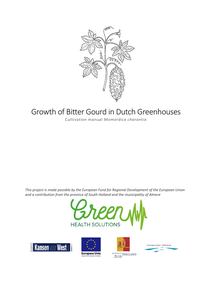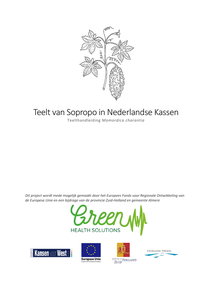The quantification and identification of new plasmid-acquiring bacteria in representative mating conditions is critical to characterize the risk of horizontal gene transfer in the environment. This study aimed to quantify conjugation events resulting from manure application to soils and identify the transconjugants resulting from these events. Conjugation was quantified at multiple time points by plating and flow cytometry, and the transconjugants were recovered by fluorescence-activated cell sorting and identified by 16S rRNA sequencing. Overall, transconjugants were only observed within the first 4 days after manure application and at values close to the detection limits of this experimental system (1.00–2.49 log CFU/g of manured soil, ranging between 10–5 and 10–4 transconjugants-to-donor ratios). In the pool of recovered transconjugants, we found amplicon sequence variants (ASVs) of genera whose origin was traced to soils (Bacillus and Nocardioides) and manure (Comamonas and Rahnella). This work showed that gene transfer from fecal to soil bacteria occurred despite the less-than-optimal conditions faced by manure bacteria when transferred to soils, but these events were rare, mainly happened shortly after manure application, and the plasmid did not colonize the soil community. This study provides important information to determine the risks of AMR spread via manure application.
LINK
Plasmid-mediated dissemination of antibiotic resistance among fecal Enterobacteriaceae in natural ecosystems may contribute to the persistence of antibiotic resistance genes in anthropogenically impacted environments. Plasmid transfer frequencies measured under laboratory conditions might lead to overestimation of plasmid transfer potential in natural ecosystems. This study assessed differences in the conjugative transfer of an IncP-1 (pKJK5) plasmid to three natural Escherichia coli strains carrying extended-spectrum beta-lactamases, by filter mating. Matings were performed under optimal laboratory conditions (rich LB medium and 37°C) and environmentally relevant temperatures (25, 15 and 9°C) or nutrient regimes mimicking environmental conditions and limitations (synthetic wastewater and soil extract). Under optimal nutrient conditions and temperature, two recipients yielded high transfer frequencies (5 × 10–1) while the conjugation frequency of the third strain was 1000-fold lower. Decreasing mating temperatures to psychrophilic ranges led to lower transfer frequencies, albeit all three strains conjugated under all the tested temperatures. Low nutritive media caused significant decreases in transconjugants (−3 logs for synthetic wastewater; −6 logs for soil extract), where only one of the strains was able to produce detectable transconjugants. Collectively, this study highlights that despite less-than-optimal conditions, fecal organisms may transfer plasmids in the environment, but the transfer of pKJK5 between microorganisms is limited mainly by low nutrient conditions.
DOCUMENT

Manure application can spread antimicrobial resistance (AMR) from manure to soil and surface water. This study evaluated the role of the soil texture on the dynamics of antimicrobial resistance genes (ARGs) in soils and surrounding surface waters. Six dairy farms with distinct soil textures (clay, sand, and peat) were sampled at different time points after the application of manure, and three representative ARGs sul1, erm(B), and tet(W) were quantified with qPCR. Manuring initially increased levels of erm(B) by 1.5 ± 0.5 log copies/kg of soil and tet(W) by 0.8 ± 0.4 log copies/kg across soil textures, after which levels gradually declined. In surface waters from clay environments, regardless of the ARG, the gene levels initially increased by 2.6 ± 1.6 log copies/L, after which levels gradually declined. The gene decay in soils was strongly dependent on the type of ARG (erm(B) < tet(W) < sul1; half-lives of 7, 11, and 75 days, respectively), while in water, the decay was primarily dependent on the soil texture adjacent to the sampled surface water (clay < peat < sand; half-lives of 2, 6, and 10 days, respectively). Finally, recovery of ARG levels was predicted after 29–42 days. The results thus showed that there was not a complete restoration of ARGs in soils between rounds of manure application. In conclusion, this study demonstrates that rather than showing similar dynamics of decay, factors such as the type of ARG and soil texture drive the ARG persistence in the environment.
DOCUMENT

Eight new primer sets were designed for PCR detection of (i) mono-oxygenase and dioxygenase gene sequences involved in initial attack of bacterial aerobic BTEX degradation and of (ii) catechol 2,3-dioxygenase gene sequences responsible for meta-cleavage of the aromatic ring. The new primer sets allowed detection of the corresponding genotypes in soil with a detection limit of 10(3)-10(4) or 10(5)-10(6) gene copies g(-1) soil, assuming one copy of the gene per cell. The primer sets were used in PCR to assess the distribution of the catabolic genes in BTEX degrading bacterial strains and DNA extracts isolated from soils sampled from different locations and depths (vadose, capillary fringe and saturated zone) within a BTEX contaminated site. In both soil DNA and the isolates, tmoA-, xylM- and xylE1-like genes were the most frequently recovered BTEX catabolic genes. xylM and xylE1 were only recovered from material from the contaminated samples while tmoA was detected in material from both the contaminated and non-contaminated samples. The isolates, mainly obtained from the contaminated locations, belonged to the Actinobacteria or Proteobacteria (mainly Pseudomonas). The ability to degrade benzene was the most common BTEX degradation phenotype among them and its distribution was largely congruent with the distribution of the tmoA-like genotype. The presence of tmoA and xylM genes in phylogenetically distant strains indicated the occurrence of horizontal transfer of BTEX catabolic genes in the aquifer. Overall, these results show spatial variation in the composition of the BTEX degradation genes and hence in the type of BTEX degradation activity and pathway, at the examined site. They indicate that bacteria carrying specific pathways and primarily carrying tmoA/xylM/xylE1 genotypes, are being selected upon BTEX contamination.
DOCUMENT
Application of animal manure to soils results in the introduction of manure-derived bacteria and their antimicrobial resistance genes (ARGs) into soils. ResCap is a novel targeted-metagenomic approach that allows the detection of minority components of the resistome gene pool without the cost-prohibitive coverage depths and can provide a valuable tool to study the spread of antimicrobial resistance (AMR) in the environment. We used high-throughput sequencing and qPCR for 16S rRNA gene fragments as well as ResCap to explore the dynamics of bacteria, and ARGs introduced to soils and adjacent water ditches, both at community and individual scale, over a period of three weeks. The soil bacteriome and resistome showed strong resilience to the input of manure, as manuring did not impact the overall structure of the bacteriome, and its effects on the resistome were transient. Initially, manure application resulted in a substantial increase of ARGs in soils and adjacent waters, while not affecting the overall bacterial community composition. Still, specific families increased after manure application, either through the input of manure (e.g., Dysgonomonadaceae) or through enrichment after manuring (e.g., Pseudomonadaceae). Depending on the type of ARG, manure application resulted mostly in an increase (e.g., aph(6)-Id), but occasionally also in a decrease (e.g., dfrB3) of the absolute abundance of ARG clusters (FPKM/kg or L). This study shows that the structures of the bacteriome and resistome are shaped by different factors, where the bacterial community composition could not explain the changes in ARG diversity or abundances. Also, it highlights the potential of applying targeted metagenomic techniques, such as ResCap, to study the fate of AMR in the environment.
DOCUMENT

Bitter gourd is also called sopropo, balsam-pear, karela or bitter melon and is a member of the cucumber family (Cucurbitaceae). It is a monoecious, annual, fast-growing and herbaceous creeping plant. The wrinkled fruit of the bitter gourd is consumed as a vegetable and medicine in Asia, East Africa, South America and India. The aim of this bitter gourd cultivation manual is to make this cultivation accessible to Dutch growers and in this way be able to meet market demand. In addition, this cultivation manual aims to provide insight into the standardized production of the medicinal ingredients in the fruit.
DOCUMENT

This conference paper deals with various organizations and pilot initiatives regarding the theme of sustainability.
DOCUMENT

Sopropo wordt ook wel bitter gourd, balsempeer, karela of bittermeloen genoemd en is lid van de komkommerfamilie (Cucurbitaceae). Het is een eenhuizige, eenjarige, snelgroeiende en kruidachtige klimplant. De gerimpelde vrucht van de bitter gourd wordt in Azië, Oost-Afrika, Zuid-Amerika en India geconsumeerd als groente en medicijn. Alhoewel de sopropo nog niet bekend is in de Nederlandse keuken, kan dit zeker een aanwinst zijn in de huidige trend om voeding te gebruiken als medicijn. Het doel van deze teelthandleiding van sopropo is het toegankelijk maken van deze teelt voor Nederlandse telers en op deze wijze te kunnen voldoen aan de marktvraag. Daarnaast heeft deze teelthandleiding als doel inzicht te geven in de gestandaardiseerde productie van de medicinale inhoudsstoffen in de vrucht.
DOCUMENT

Development of novel testing strategies to detect adverse human health effects is of interest to replace in vivo-based drug and chemical safety testing. The aim of the present study was to investigate whether physiologically based kinetic (PBK) modeling-facilitated conversion of in vitro toxicity data is an adequate approach to predict in vivo cardiotoxicity in humans. To enable evaluation of predictions made, methadone was selected as the model compound, being a compound for which data on both kinetics and cardiotoxicity in humans are available. A PBK model for methadone in humans was developed and evaluated against available kinetic data presenting an adequate match. Use of the developed PBK model to convert concentration–response curves for the effect of methadone on human-induced pluripotent stem cell-derived cardiomyocytes (hiPSC-CM) in the so-called multi electrode array (MEA) assay resulted in predictions for in vivo dose–response curves for methadone-induced cardiotoxicity that matched the available in vivo data. The results also revealed differences in protein plasma binding of methadone to be a potential factor underlying variation between individuals with respect to sensitivity towards the cardiotoxic effects of methadone. The present study provides a proof-of-principle of using PBK modeling-based reverse dosimetry of in vitro data for the prediction of cardiotoxicity in humans, providing a novel testing strategy in cardiac safety studies.
DOCUMENT

Dit hoofdstuk beschrijft acht fundamentele problemen, die zich voordoen als men competenties, in de betekenis die gangbare definities aan dit begrip verlenen, probeert te meten in het onderwijs. Uit het betoog vloeit een dilemma voort: we kunnen niet meten wat we in competentiegericht onderwijs zouden willen meten. Wat we wel kunnen meten, zijn geen 'echte' competenties. Uit dit dilemma wordt een uitweg gezocht.
DOCUMENT
